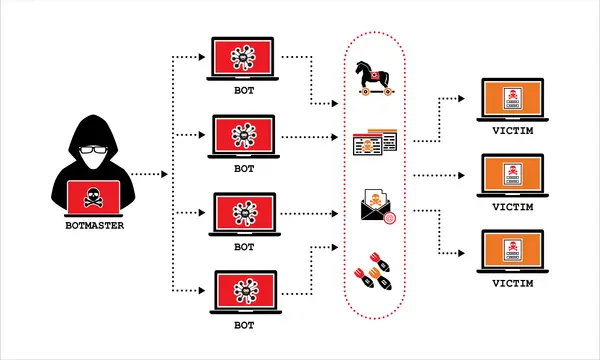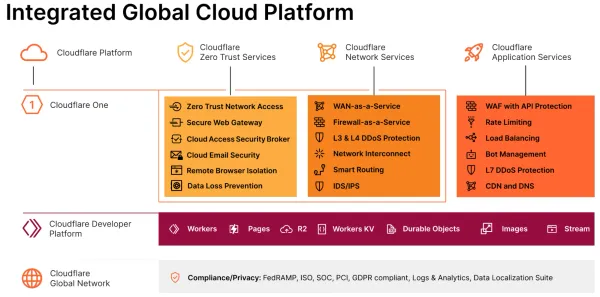Harrods Data Breach: 430,000 Customer Records Exposed in Third-Party Security Incident

London's iconic luxury retailer falls victim to supply chain attack as cybercriminals target UK retail sector
Executive Summary
In late September 2025, Harrods, the prestigious London-based luxury department store, disclosed a significant data breach affecting approximately 430,000 online customers. The incident, which came to light on September 26-27, resulted from a security compromise at an unnamed third-party service provider rather than a direct breach of Harrods' own systems. While the stolen data was limited to basic customer identifiers—names and contact details—the breach underscores the growing vulnerability of retail organizations to supply chain attacks and marks the latest in a devastating year of cyber incidents targeting major UK retailers.
The Breach: What Happened
Timeline and Discovery
Harrods first notified affected customers via email on Friday, September 26, 2025, after being alerted to suspicious activity at one of its external service providers. The luxury retailer acted swiftly to inform both customers and relevant authorities, including the Information Commissioner's Office (ICO), in compliance with UK GDPR regulations.
In a public statement released on September 29, Harrods confirmed: "We have received communications from the threat actor and will not be engaging with them. Our focus remains on informing and supporting our customers."
Scope of Compromised Data
The breach affected approximately 430,000 customer records from Harrods' e-commerce platform. The compromised information included:
- Customer names
- Email addresses
- Phone numbers
- Postal addresses
- Marketing preferences (in some cases)
- Loyalty program information (in limited instances)
- Co-branded card affiliations (where applicable)
Critically, Harrods emphasized that the breach did not include:
- Account passwords
- Payment card details
- Financial information
- Order histories
- Transaction data
A company spokesperson noted that marketing-related data exposed in the breach "is unlikely to be interpreted accurately by an unauthorized third party," though cybersecurity experts warn that even basic personal identifiers can enable sophisticated phishing campaigns and social engineering attacks.
Impact Assessment
While 430,000 records represents a significant number, Harrods indicated this constitutes only a small proportion of its overall customer base. The majority of Harrods' clientele shop exclusively in-store at its flagship Knightsbridge location and airport branches, meaning the breach primarily affected online shoppers.
The Third-Party Connection
Supply Chain Vulnerability
The Harrods breach exemplifies a concerning trend in 2025: the rise of third-party and supply chain attacks. Rather than directly targeting Harrods' internal infrastructure, cybercriminals exploited vulnerabilities in an external service provider's systems to access customer data.
Harrods declined to identify the compromised third-party vendor, citing an "ongoing criminal investigation." This lack of transparency, while understandable from an investigative standpoint, raises questions about accountability and the broader security of vendor ecosystems supporting luxury retail operations.
Industry-Wide Pattern
The Harrods incident is far from isolated. Recent statistics paint a sobering picture of third-party security risks:
- At least 36% of all data breaches in 2024 originated from third-party compromises, up 6.5% year-over-year
- Third-party breaches are the second-costliest attack vector, averaging $4.91 million in damages
- Supply chain compromises take the longest to identify and contain—an average of 267 days
- 71% of organizations experienced at least one material third-party cybersecurity incident in the past year
The financial services and retail sectors have been particularly hard-hit, with the average cost of a data breach reaching nearly $4.8 million when originating from third-party systems.
A Turbulent Year for UK Retail
Spring 2025: The DragonForce Campaign
The September breach at Harrods was not the retailer's first cybersecurity challenge in 2025. The luxury store was among several high-profile UK retailers targeted during a coordinated wave of attacks in April and May. For a comprehensive analysis of this ransomware wave, see our deep dive into the 2025 UK retail cyberattacks.
Marks & Spencer suffered a devastating ransomware attack over Easter weekend 2025 that forced the suspension of all online orders for 46 days and caused an estimated £300 million in lost operating profit. The attack, attributed to the Scattered Spider hacking collective working with DragonForce ransomware, compromised customer data including names, addresses, and order histories—though no payment details or passwords were stolen. The incident was so severe that M&S chairman Archie Norman described it as "traumatic" when testifying before Parliament following the arrests of four suspects.
Co-op experienced a major breach that ultimately affected 6.5 million members, resulting in approximately £206 million in lost sales. The attack exposed names, contact details, and membership numbers, demonstrating the massive scale of damage that can result from retail sector cyberattacks.
Harrods (May incident) detected an attempted unauthorized access to its systems, responding by restricting internet access across all sites as a precautionary measure. This swift action prevented data compromise, but the incident highlighted the retailer's position as a target for cybercriminals.
In July 2025, the UK's National Crime Agency arrested four individuals—two 19-year-old men, a 17-year-old male, and a 20-year-old woman—in connection with these spring attacks. The suspects were detained on suspicion of Computer Misuse Act offenses, blackmail, money laundering, and participation in organized crime activities. Read our full coverage of the arrests and their significance.
Broader UK Retail Impact
The Cyber Monitoring Centre classified the M&S and Co-op attacks as a single "Category 2 systemic event," estimating combined financial impact between £270 million and £440 million. Other major UK businesses affected by cyber incidents in 2025 include:
- Jaguar Land Rover: Hit by a major cyberattack in September that severely disrupted production, causing £120 million in lost profits and £1.7 billion in lost revenue
- Adidas: Suffered a data breach in May through a third-party customer service provider
- H&M: Experienced an IT outage in June that briefly took in-store payment systems offline
Understanding the Threat Landscape
Why Luxury Retailers Are Targets
Luxury retailers like Harrods present attractive targets for cybercriminals for several reasons:
- High-value customer base: Affluent clientele may be more lucrative targets for identity theft, fraud, and social engineering
- Rich data repositories: Customer profiles often contain extensive personal and purchasing information
- Reputational sensitivity: Premium brands are particularly vulnerable to reputational damage, potentially making them more likely to pay ransoms
- Complex vendor ecosystems: Luxury retailers rely on numerous third-party providers for services ranging from customer relationship management to logistics
The Evolution of Attack Vectors
The Harrods breach reflects broader shifts in cybercriminal tactics:
Social Engineering Sophistication: Many 2025 retail breaches, including the M&S attack, began with attackers impersonating employees and requesting password resets from IT helpdesks. This technique bypasses technical security controls by exploiting human vulnerabilities. The Scattered Spider group, known for their sophisticated social engineering tactics, played a central role in the spring 2025 retail attack wave.
Third-Party Exploitation: Rather than attacking well-defended corporate networks directly, threat actors increasingly target less secure vendors and suppliers who have legitimate access to customer data.
Ransomware-as-a-Service: Groups like DragonForce and Scattered Spider operate as loosely affiliated collectives, offering ransomware tools and services to affiliates—creating a scalable, distributed threat model.
Harrods' Response and Customer Guidance
Immediate Actions Taken
Harrods responded to the breach with several key measures:
- Proactive customer notification: Affected e-commerce customers were informed via email beginning September 26
- Regulatory compliance: The ICO and other relevant authorities were notified within required timeframes
- Incident containment: The company characterized the breach as "isolated" and confirmed it had been contained
- No engagement policy: Harrods publicly stated it would not negotiate or communicate with the threat actors
Customer Protection Measures
Harrods directed affected customers to a dedicated helpline and online support portal. Despite the company's assurance that no passwords or payment details were compromised, cybersecurity experts recommend affected customers take the following precautions:
- Monitor accounts: Watch for suspicious activity across all online shopping accounts
- Beware phishing attempts: Remain vigilant for targeted emails, SMS messages, or phone calls claiming to be from Harrods or related to order issues, delivery exceptions, or loyalty programs
- Enable multi-factor authentication: Add an extra layer of security to all online retail accounts
- Review password hygiene: If you've reused passwords across multiple sites, change them to unique, strong passwords
- Check credit reports: Monitor for any unusual activity that could indicate identity theft
Harrods emphasized it will never ask for sensitive information via email or phone, and customers should report suspicious communications.
Separation from Earlier Incidents
Harrods has been explicit that the September 2025 third-party breach is entirely separate from the attempted intrusion in May 2025. The spring incident prompted immediate defensive actions—including network access restrictions—that successfully prevented data compromise.
The May attacks were part of the coordinated DragonForce/Scattered Spider campaign targeting multiple UK retailers. The September breach, by contrast, appears to be an opportunistic attack exploiting vulnerabilities in Harrods' supply chain rather than a direct assault on the retailer's infrastructure.
This distinction is important but offers little comfort: it demonstrates that even organizations that successfully defend against direct attacks remain vulnerable through their extended vendor ecosystems.
Regulatory and Legal Implications
UK GDPR Compliance
Under UK GDPR regulations, data controllers must report breaches to the ICO within 72 hours when there is a risk to individuals' rights and freedoms. Data processors must promptly inform controllers of any breaches affecting their data.
Harrods, as the data controller, bears ultimate responsibility for customer data protection, even when a third-party processor is compromised. The ICO is likely conducting a standard investigation to assess:
- The adequacy of Harrods' vendor security assessments
- Whether appropriate contractual safeguards were in place
- The timeliness and completeness of breach notifications
- The effectiveness of remediation measures
Potential Consequences
While the ICO has not announced any enforcement action, potential consequences could include:
- Financial penalties: UK GDPR violations can result in fines up to £17.5 million or 4% of annual global turnover, whichever is higher
- Compensation claims: Affected individuals can pursue compensation for material or non-material damage
- Reputational impact: Beyond regulatory penalties, brand damage and customer trust erosion pose significant long-term risks
The fact that no highly sensitive financial data was exposed may mitigate the severity of potential penalties, but the incident still represents a significant compliance event requiring thorough investigation.
Lessons for the Retail Sector
The Third-Party Risk Crisis
The Harrods breach joins a growing catalog of incidents demonstrating that vendor security is no longer a peripheral concern but a central strategic risk. Key takeaways include:
1. Vendor Security Assessment Must Evolve
Traditional vendor risk management—relying on questionnaires and periodic assessments—is insufficient. Organizations need:
- Continuous, real-time monitoring of vendor security postures
- Regular penetration testing requirements for critical vendors
- Automated assessment tools that can scale across hundreds or thousands of suppliers
- Clear breach notification timelines in vendor contracts
2. Data Minimization Matters
If marketing, analytics, or fulfillment vendors don't require certain data elements at rest, organizations should avoid sharing them or implement aggressive masking and expiration policies. The less data exposed in vendor systems, the smaller the potential impact of a breach.
3. Incident Response Planning Must Account for Supply Chain
Traditional incident response plans often assume breaches originate within an organization's perimeter. Modern scenarios require:
- Tabletop exercises simulating vendor compromises
- Clear protocols for when to notify customers about third-party incidents
- Pre-established communication channels with critical vendors
- Understanding of data flows throughout the extended supply chain
4. Access Control and Segmentation
While segmentation likely limited the Harrods breach to the vendor's data only, many organizations grant excessive access to third parties. Best practices include:
- Principle of least privilege for all vendor access
- Multi-factor authentication requirements
- Regular access reviews and recertification
- Network segmentation isolating vendor connections
The Broader Cybersecurity Context
2025: A Watershed Year for Retail Cyber Risk
The succession of high-profile breaches in 2025 marks a turning point for retail cybersecurity:
- Sustained, coordinated campaigns: Rather than isolated incidents, retailers face persistent, organized threats
- Financial materiality: Cyber incidents now represent board-level financial risks, not merely IT issues
- Operational resilience testing: Attacks like those on M&S demonstrate how cyber events can cripple fundamental business operations
- Supply chain concentration risk: Shared vendors create systemic vulnerabilities affecting entire sectors
Government and Industry Response
The UK government has taken note of the retail sector's vulnerability. Cabinet minister Pat McFadden stated during a government-organized cybersecurity meeting: "What we have seen over the past couple of weeks should serve as a wake-up call for businesses and organisations. Cybersecurity is not a luxury but an absolute necessity."
The National Cyber Security Centre has issued specific guidance urging retailers to:
- Review IT helpdesk password reset processes
- Implement stronger identity verification for system access
- Enhance monitoring for social engineering attempts
- Stress-test business continuity plans for prolonged system outages
Consumer Impact and Trust
Beyond the immediate technical and regulatory concerns, these breaches erode the foundational trust between retailers and customers. When consumers share personal information with brands like Harrods, they expect:
- Robust protection of their data
- Transparent communication if something goes wrong
- Accountability and remediation when breaches occur
- Evidence of learning and improvement
Rebuilding trust after a breach requires not just fixing the immediate vulnerability, but demonstrating comprehensive security improvements across the entire ecosystem.
Looking Forward: Building Retail Cyber Resilience
Strategic Imperatives
For retailers seeking to prevent similar incidents, several strategic priorities emerge:
1. Elevate Third-Party Risk Management
- Establish a centralized Third-Party Risk Management (TPRM) function with executive oversight
- Implement continuous monitoring rather than point-in-time assessments
- Require evidence of security controls, not just attestations
- Build incident response capabilities into vendor contracts
2. Invest in Visibility and Detection
- Deploy Security Information and Event Management (SIEM) systems that incorporate vendor activity
- Implement User and Entity Behavior Analytics (UEBA) to detect anomalies
- Establish baseline monitoring for all critical vendor connections
- Ensure logging and audit trail capabilities extend to third-party systems
3. Strengthen Identity and Access Management
- Require multi-factor authentication for all vendor access
- Implement privileged access management for high-risk connections
- Regular access recertification processes
- Just-in-time access provisioning where possible
4. Enhance Crisis Communication Capabilities
- Pre-drafted breach notification templates
- Clear decision trees for customer communication
- Established relationships with cybersecurity forensics firms
- Media and public relations strategies for breach scenarios
5. Financial Resilience and Insurance
- Cyber insurance coverage adequate to incident costs
- Understanding of policy exclusions and limitations
- Financial reserves for incident response and remediation
- Clear understanding of regulatory penalty exposure
Related Reading
For more context on the 2025 UK retail cybersecurity crisis:
- Major Breakthrough: Four Arrested in £440M Cyber Attacks on UK Retail Giants - Coverage of the NCA arrests connected to the M&S, Co-op, and Harrods attacks
- UK Retail Cyberattacks: A Deep Dive into the 2025 Ransomware Wave - Comprehensive analysis of the Scattered Spider campaign and DragonForce ransomware attacks
Conclusion
The Harrods data breach of September 2025 represents far more than an isolated security incident. It is a stark illustration of the evolving threat landscape facing modern retail organizations, where the security of the extended vendor ecosystem is as critical as internal defenses.
With 430,000 customer records exposed—even without highly sensitive financial data—the incident demonstrates how third-party vulnerabilities can undermine even well-resourced organizations. For Harrods, the breach adds to a challenging year that included a separate attempted attack in May, placing the iconic luxury brand at the center of broader conversations about retail cybersecurity resilience.
The lessons extend beyond Harrods to the entire retail sector: as customer expectations rise, attack sophistication increases, and vendor ecosystems grow more complex, organizations must fundamentally rethink their approach to cybersecurity. The traditional perimeter has dissolved, replaced by an interconnected web of relationships where trust in vendors must be continuously verified, never simply assumed.
For UK retail as a whole, 2025 has been a year of reckoning. The combined financial impact of breaches at Harrods, M&S, Co-op, and others reaches into the hundreds of millions of pounds—with costs measured not just in immediate response expenses but in lost sales, operational disruption, regulatory penalties, and most importantly, eroded consumer trust.
As the retail sector navigates this challenging landscape, success will require more than reactive incident response. It demands a proactive, comprehensive approach to cybersecurity that treats vendor risk as enterprise risk, prioritizes continuous monitoring over periodic assessments, and recognizes that in an interconnected digital economy, an organization is only as secure as its weakest link.
The question facing Harrods and its peers is not whether future attacks will come—they will—but whether organizations can build the resilience, visibility, and agility needed to detect, respond to, and recover from inevitable security incidents while maintaining customer trust and operational continuity.
Key Takeaways
✓ 430,000 customer records were exposed in a third-party breach at Harrods in September 2025
✓ Basic personal identifiers (names, contact details) were stolen, but no payment information or passwords were compromised
✓ Third-party attacks represented 36% of all data breaches in 2024, with costs averaging $4.91 million
✓ UK retail sector experienced devastating cyber incidents in 2025, with combined losses exceeding £440 million
✓ Supply chain security has become the dominant risk vector, requiring fundamental changes to vendor risk management
✓ Regulatory scrutiny under UK GDPR places ultimate responsibility on data controllers even when processors are breached
✓ Customer vigilance remains essential—affected individuals should monitor for phishing attempts and enable multi-factor authentication
This article was prepared based on publicly available information as of October 2025. Organizations should consult with cybersecurity and legal professionals for specific guidance related to their circumstances.





